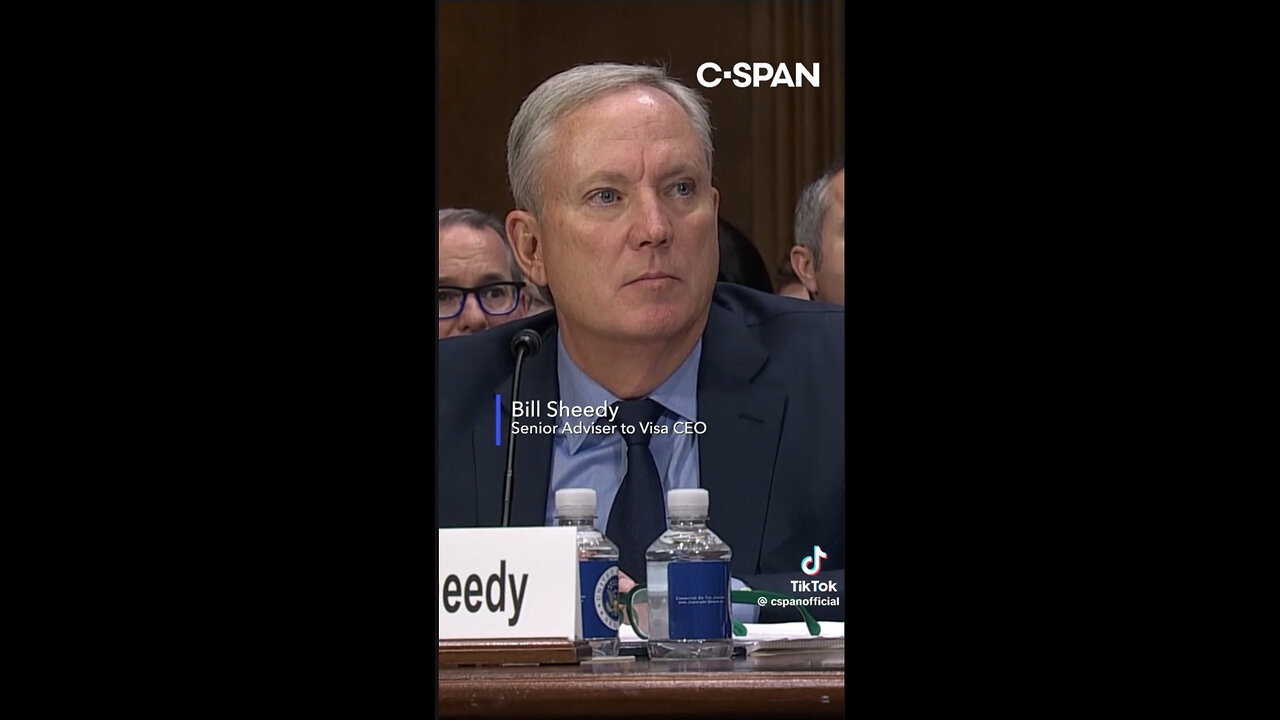Premium Only Content

Monopoly or Convenience? The Stark Reality of Visa, MasterCard, and the Cost of Convenience
In the intricate web of financial systems, few entities wield as much power as Visa and MasterCard. Their dominance in the credit card market—controlling 80% of transactions—is staggering, and their profit margins, reportedly exceeding 50%, are virtually unheard of in most industries. Yet, these titans argue they cannot withstand competition, citing the complexity of their services and their indispensable role in the economy. But beneath this rhetoric lies a troubling story of monopolistic behavior, the burden on small businesses, and the astronomical cost to consumers.
Let’s break down the key dynamics at play, their implications for businesses and consumers, and why this conversation about fairness in the financial system is critical.
I. The Mechanics of Monopoly: How Visa and MasterCard Dominate
1. The Interchange Fee System
Visa and MasterCard operate as payment networks, setting interchange fees that merchants must pay for every credit card transaction. These fees are:
• Hidden but Significant: Often 2-3% of each transaction, these fees seem small but accumulate to billions annually.
• Volume-Driven Discounts: Larger merchants like Walmart negotiate lower rates due to their transaction volume, while small businesses are left paying significantly more.
2. The Customer Convenience Trap
Small businesses, despite paying higher fees, often feel they have no choice but to accept these cards. Why?
• Customer Expectations: Consumers demand the convenience and rewards associated with credit card use.
• Limited Alternatives: With Visa and MasterCard controlling 80% of the market, options for alternative payment methods are limited.
3. Barriers to Competition
Visa and MasterCard maintain their dominance through:
• Network Effects: Their widespread acceptance reinforces their market position, making it difficult for new entrants to compete.
• Lobbying Power: By influencing legislation, they ensure that challenges to their business model are kept at bay.
II. The Economic Burden: A Billion-Dollar Shaft to Small Businesses
1. The Cost to Small Businesses
Small businesses often pay higher interchange fees than large corporations, with Missouri businesses alone shouldering $1.5 billion annually in fees. These costs:
• Erode already thin profit margins.
• Limit the ability of small businesses to invest in growth, employees, and innovation.
• Create an uneven playing field, favoring larger competitors with better-negotiated rates.
2. The Pass-Through to Consumers
Merchants often pass the cost of interchange fees onto consumers in the form of higher prices. Thus, even cash-paying customers indirectly subsidize the credit card system.
III. The Consumer Debt Crisis: A $1.17 Trillion Problem
1. The Numbers That Stagger
• U.S. consumers owe $1.17 trillion on credit card networks, with average APRs nearing 29%—the highest in decades.
• The debt burden has nearly doubled in four years, as consumers increasingly rely on credit for everyday expenses amid rising inflation.
2. The Cycle of Dependence
Credit cards have become less a tool of convenience and more a necessity for many households:
• Rising Costs, Stagnant Wages: Consumers turn to credit cards to bridge the gap between income and expenses.
• Debt Spiral: High-interest rates ensure that many consumers remain trapped in a cycle of debt, unable to pay off balances while accumulating new charges.
3. The Role of the Networks
Visa and MasterCard argue they do not set interest rates, pointing instead to banks. However, as the central players in this ecosystem, they profit from the increased transaction volume driven by rising consumer debt.
IV. What Are We Paying For?
Visa and MasterCard justify their profit margins by pointing to the value they provide:
• Fraud Prevention: They invest heavily in technologies to detect and prevent fraud.
• Global Reach: Their networks facilitate seamless transactions worldwide.
• Customer Rewards: Credit card rewards programs are funded in part by interchange fees, incentivizing consumer loyalty.
While these services are valuable, the question remains: do they justify the disparity in costs between large corporations and small businesses? Do they warrant profit margins exceeding those of most industries?
V. The Call for Competition: Leveling the Playing Field
1. Why Competition Matters
Introducing competition into the credit card market could:
• Reduce interchange fees for small businesses, allowing them to reinvest savings.
• Encourage innovation in payment technologies.
• Force Visa and MasterCard to justify their pricing models with transparency and fairness.
2. Potential Solutions
• Regulatory Action: Caps on interchange fees, similar to those implemented in the European Union, could limit excessive costs for merchants.
• Alternative Payment Systems: Promoting digital wallets, decentralized finance (DeFi), and other payment innovations could break the duopoly.
• Transparency Requirements: Mandating greater clarity around fees and rates would empower businesses and consumers to make informed decisions.
VI. The Ethical Question: How Much Is Too Much?
At its core, this debate is about fairness:
• Is it ethical for Visa and MasterCard to profit at levels exceeding 50% while small businesses struggle to survive?
• Should consumers bear the brunt of hidden fees and rising debt while these corporations enjoy record revenues?
Visa and MasterCard are not just businesses—they are stewards of the financial system. With great power comes great responsibility, and their current practices raise serious questions about whether they are meeting that responsibility.
VII. Conclusion: Reimagining the Financial Ecosystem
The revelations about Visa and MasterCard’s profit margins, market control, and the burden they impose on small businesses and consumers should prompt a collective reevaluation of our financial systems. It’s not just about interchange fees or debt—it’s about the broader question of who benefits and who pays in the modern economy.
As consumers, businesses, and policymakers, we must demand more: more transparency, more fairness, and more competition. The stakes are too high to accept the status quo. After all, this isn’t just about transactions—it’s about trust in the systems that underpin our lives.
-
 53:41
53:41
PMG
1 day ago $2.12 earned"CNN Caught Issuing FAKE Report-Ashley Hayek"
9.05K4 -
 57:22
57:22
barstoolsports
18 hours agoHardest Puzzle Breaks Brains | Surviving Barstool S4 Ep. 8
270K13 -
 9:02:15
9:02:15
Dr Disrespect
21 hours ago🔴LIVE - DR DISRESPECT - MARVEL RIVALS - RANKED
394K68 -
 1:00:46
1:00:46
The StoneZONE with Roger Stone
13 hours agoFake News Attack on Tulsi Gabbard! | The StoneZONE w/ Roger Stone
78.2K25 -
 2:24:08
2:24:08
WeAreChange
16 hours agoElon Musk & Donald Trump: The Emergency Halt That Saved Us
100K65 -
 1:13:11
1:13:11
Flyover Conservatives
1 day agoWARNING! Is Bitcoin CIA-Controlled? – The Shocking Reality of Digital Assets - Clay Clark | FOC Show
50K18 -
 2:00:37
2:00:37
Space Ice
18 hours agoSpace Ice & Redeye Try To Figure Out Seagal's Most Incoherent Movie
173K7 -
 1:00:36
1:00:36
PMG
1 day ago $16.52 earned"Santa Trump is Giving Us Hope - But Will Johnson Stand Strong?"
125K17 -
 54:30
54:30
LFA TV
1 day agoThe German Strongman’s Arrival Is Imminent | Trumpet Daily 12.18.24 7PM EST
91.9K9 -
 2:04:11
2:04:11
Melonie Mac
16 hours agoGo Boom Live Ep 32! Soul Reaver Remastered!
76K11